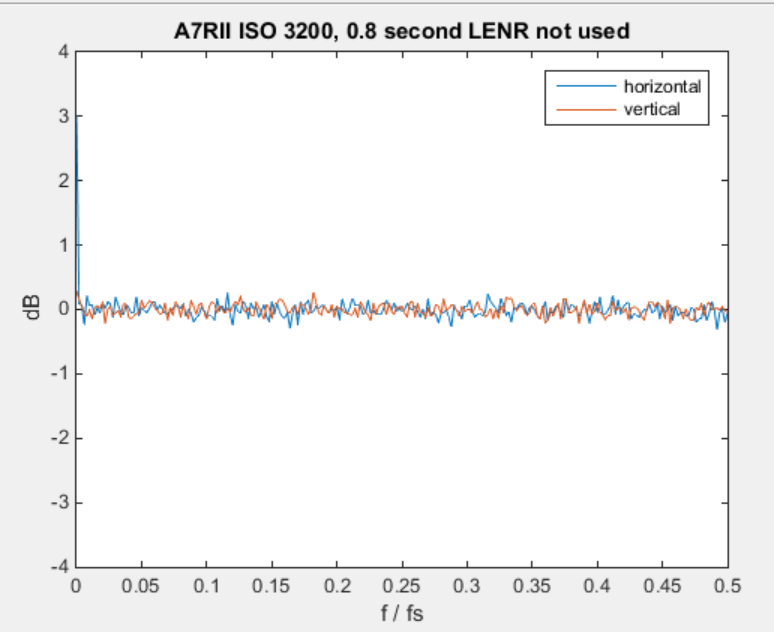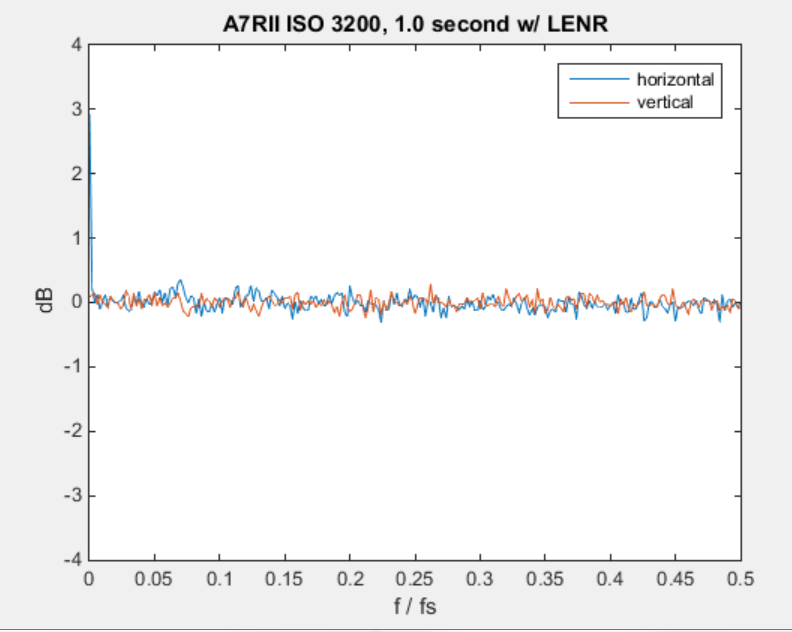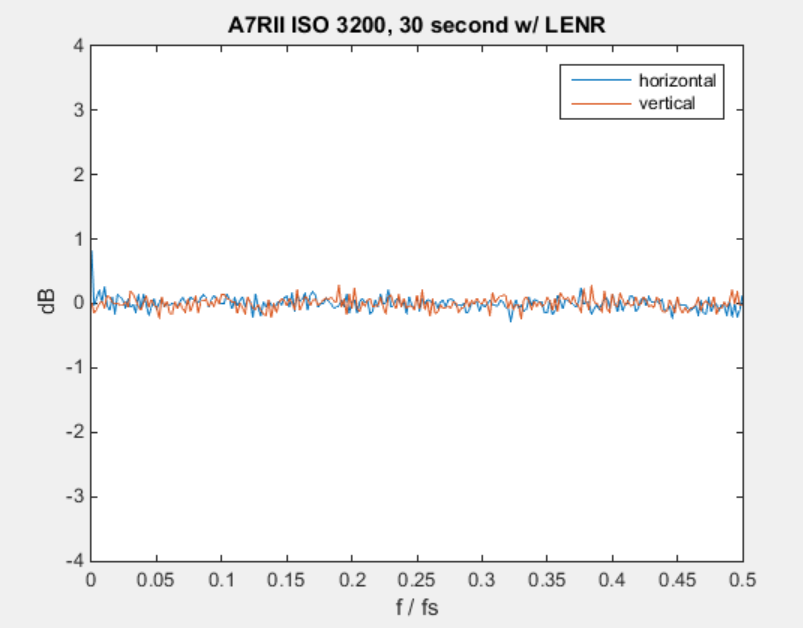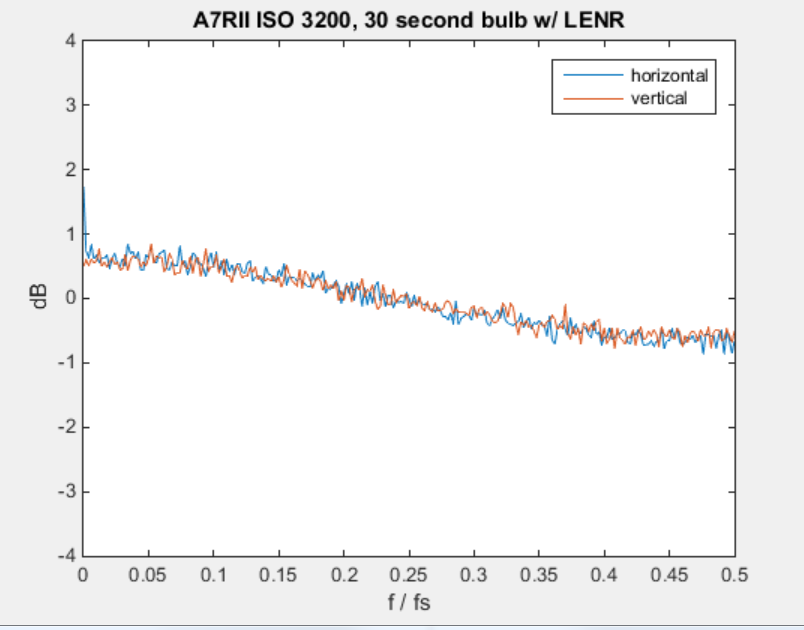We saw in the previous post that the long exposure noise reduction (LENR) option in the Sony a7RII reduced the precision from 13 to 12 bits. We have previously seen that some 12-bit modes bring spatial filtering to the a7RII. Is LENR one of them?
Here’s the spectrum of a 1000×1000 sample from the center of a a7RII dark field image at ISO 3200 at a shutter speed of 0,8 second, with LENR on, but not used by the camera because it’s too fast.
The vertical axis is the noise level in decibels with an arbitrary reference. The horizontal axis is frequency, with half the sampling frequency on the far right. A pure white noise spectrum would yield a ruler-flat straight line with an infinite number of samples, and a jagged one with fewer. Except for a very low frequency value for the horizontal component which is due to column noise, this is a textbook example.
Now let’s look at what happens with a 1 second exposure, which causes the LENR operation to take place:
Not much difference. Let’s look at a 30 second exposure timed by the camera:
Pretty much the same, too.
Now, a 30 second exposure in bulb mode, which we have seen to previously cause low pass filtering with LENR off. Are things different with LENR on?
No, they are not. This bulb exposure causes the high frequencies to be attenuated by about a decibel and a half compared to the low ones.




I’ve found your testing of Sony cameras over the past couple of years fascinating and your latest round with the A7RII is no exception.
But as a practical matter, I’m not quite sure how to incorporate your findings into my workflow.
To bring all of your conclusions re: long exposures with Sony cameras together, is it possible you can provide a “best practices” recommendation for a nighttime photographer (such as myself) who desires to achieve the best IQ possible when using these cameras?
Do I: Shoot at base ISO in bulb mode and let the chips fall where they may, 12-bit files be damned?
Bump the ISO and/or open-up the lens as necessary to keep the exposure length under 30 seconds, stacking multiple multiple exposures if necessary to achieve sufficient depth of field?
Leave the LENR off, shoot multiple files and then blend them in Photoshop to keep noise in check?
Some combination of the above or ???
In any event, thank you for taking the time to do your testing and more importantly, thank you for sharing your results and conclusions.
JG